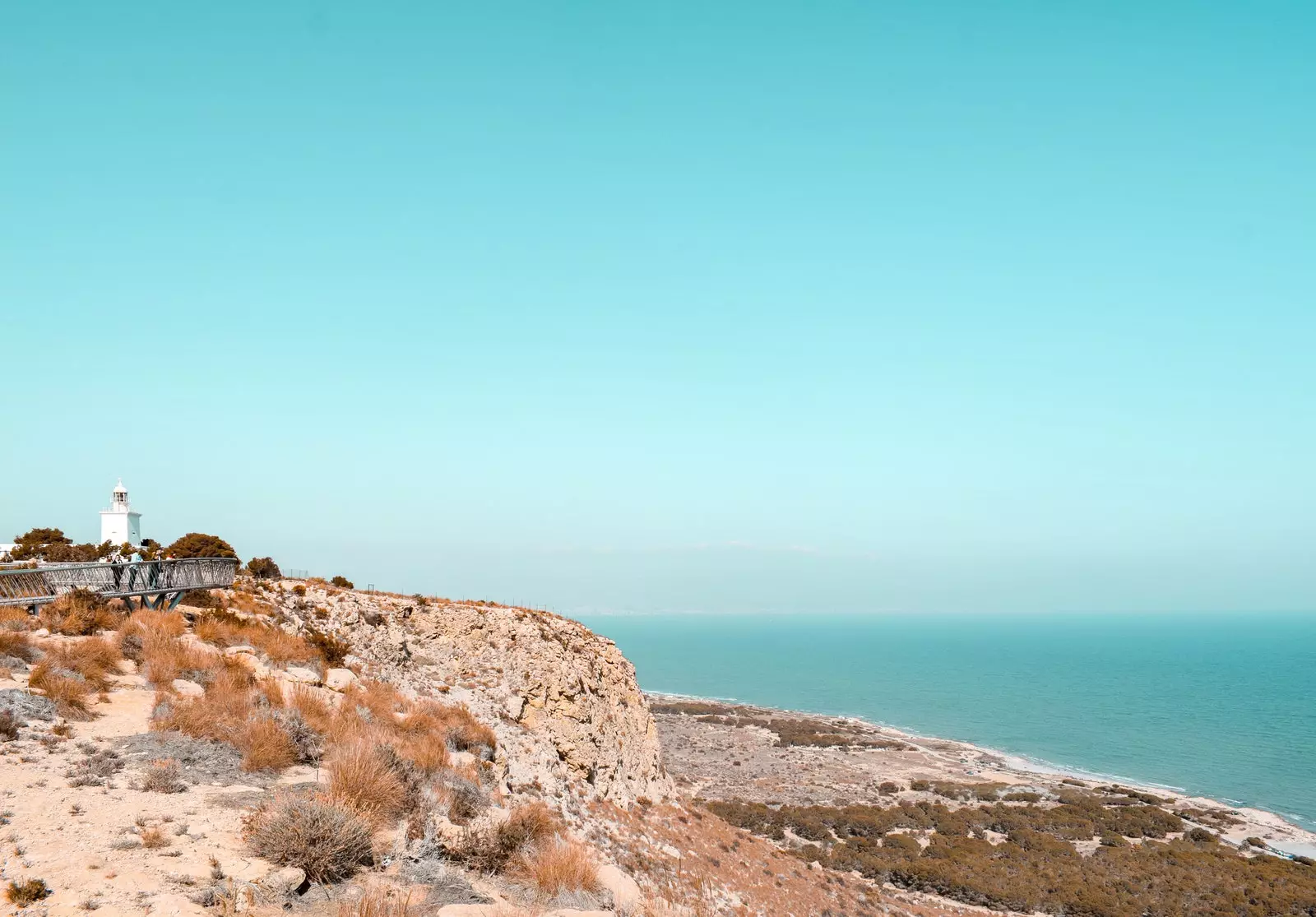
A postcard from Santa Pola
The thousand songs of the seagulls, the transfer of fishermen or the salt that here forms a particular DNA. Along the Mediterranean coast there are towns where you can perceive the seafaring spirit that we came to look for, but few of them compare with Santa Pola. Because in this enclave south of the city of Alicante, that Spain so “of August”, so ours, is mixed with some of the best options in nature, beaches and gastronomy that the Costa Blanca has to offer.
Base of a Roman settlement from which today part of its historical heritage emanates, Santa Pola was forgotten at the mercy of a nearby city of Elche that turned it into a strategic bastion against the attacks of the Barbary pirates. After its independence in 1812, this humble stronghold linked the boom in salt activity with the expansion of its fleet due to the tourist boom of the 1960s.
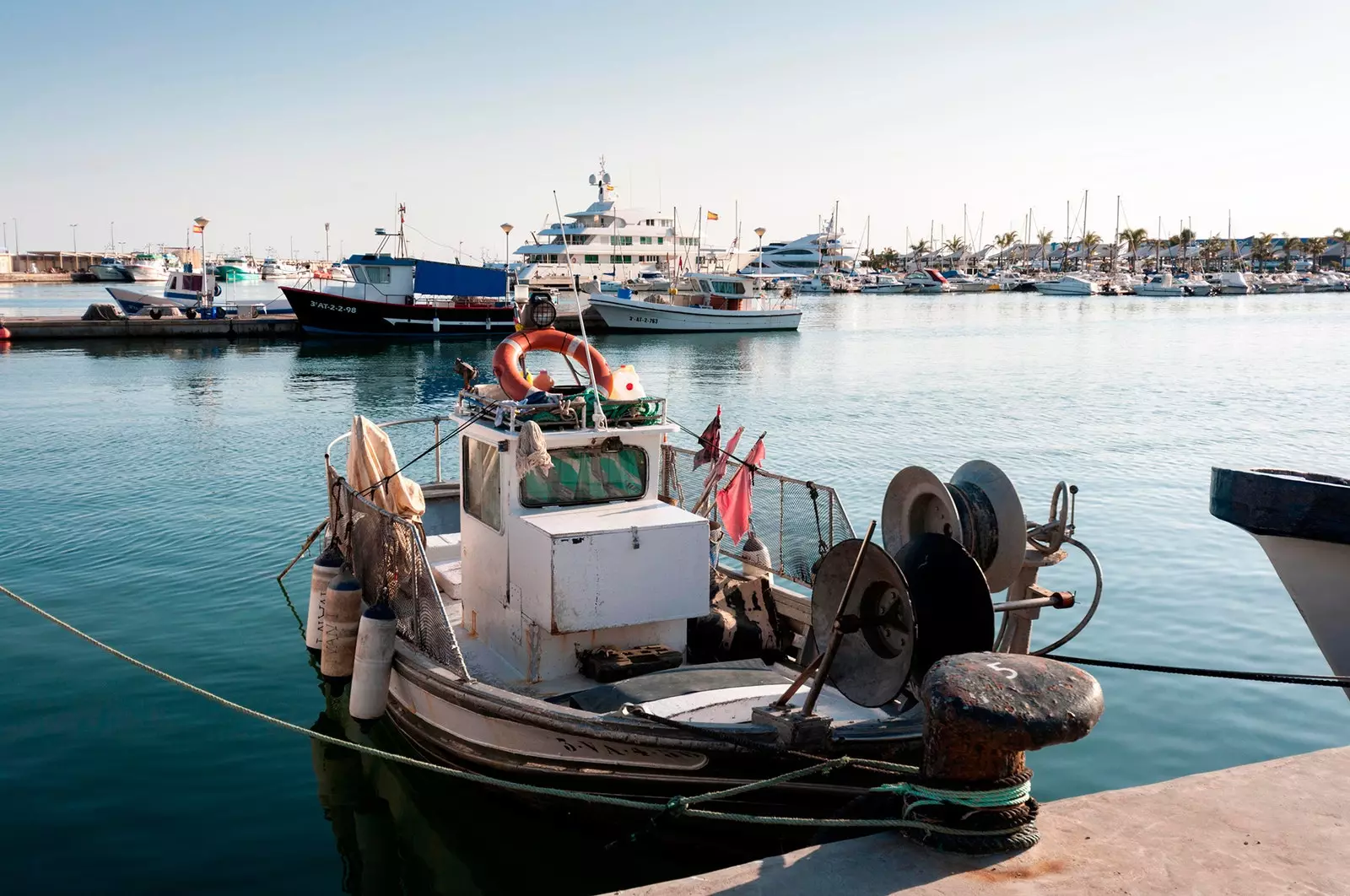
The maritime charm of the Costa Blanca fits into a single panorama
Today, the sum of all his triumphs hatches in a marine paradise where the shrimp is the "red gold" of any sea foodie, beaches caress portable fishmongers or flamingos fly over its eclectic hotels.
we tell you all the reasons to visit Santa Pola.
1.THE MARINE CHARM OF THE COSTA BLANCA, IN A SINGLE VIEW
The bustle of tourists crowded together to the ship that departs for the island of Tabarca. The maddened seagulls, the deserted fish shops awaiting the arrival of the fishermen or the naked nets that, more than fish, seem to contain hundreds of stories. In a place along the promenade, two ladies have replaced the robe with a huge towel, while the waiters of the legendary bar The Curros , wrapped in nostalgia and sand, dispatch shrimps with the skill that only a privileged breeze grants here.
Unlike other places, Santa Pola allows a unique sensory panorama from its port without the need to follow an ABC of monuments. Or maybe yes.
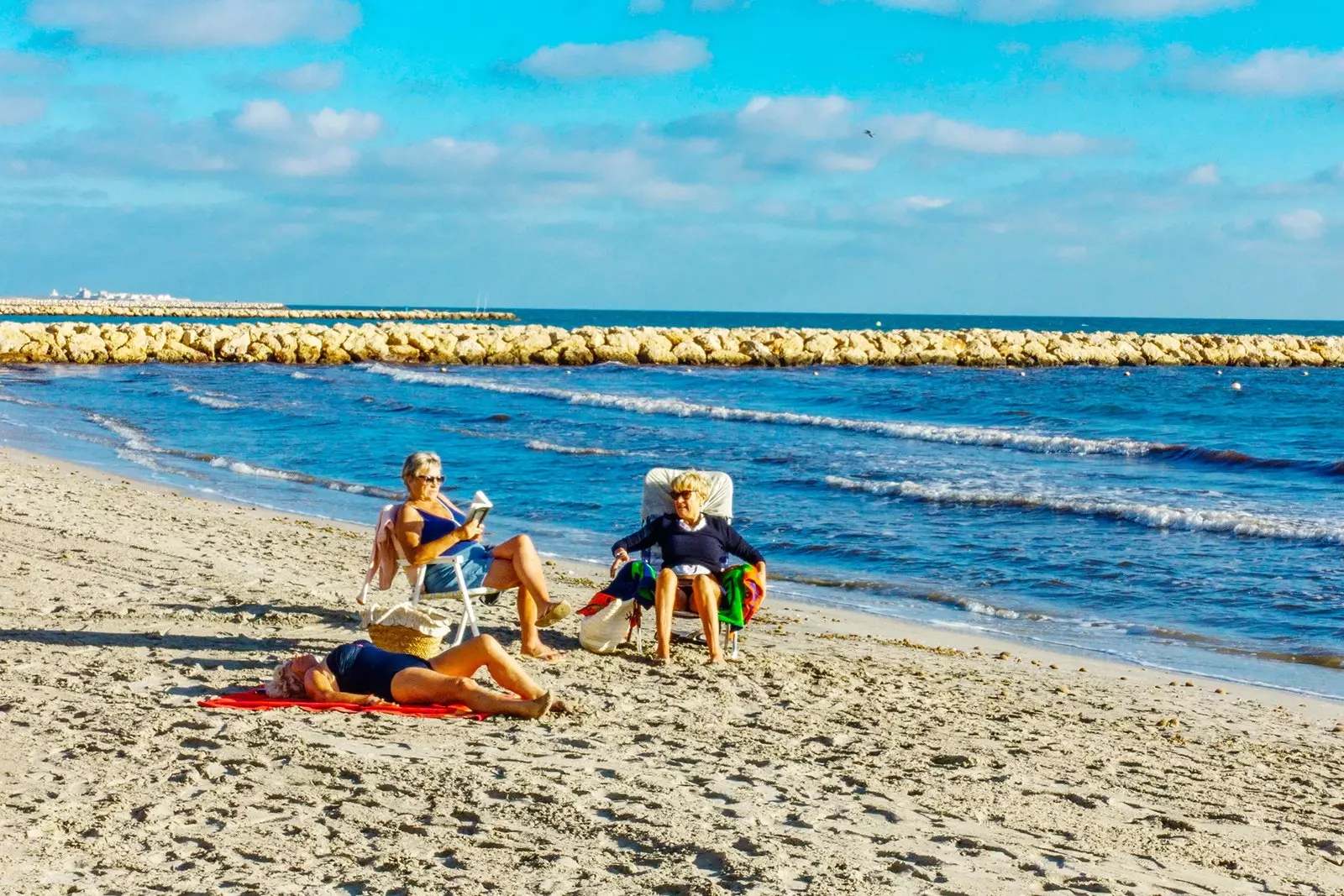
Experience is a degree when choosing a good beach and a good place
2. A HISTORICAL TOWN WHERE THERE ARE PALM TREES, HERMITAGES AND EVEN MUSEUMS
The markets and fish shops, with their marine mosaics and reconciling aromas, are the best preamble from which to enter the old town of Santa Pola. And there, while you walk through its streets, the Castle-Fortress Cultural Center, built in the 16th century, invites you to visit a Parade which today houses some of the main attractions of the town. Among them, the Museum of the Sea or the curious Chapel of the Virgin of Loreto, example of the picturesque chapels and hermitages that you will find in the old town.
Attractions to link with the exuberant roman house , a luxurious Roman villa dating from the 4th century AD where its tessera mosaics surround the old ericlinium (dining room), cecus (living room) or rooms. As a background, the tapestry that represents the Palm Grove of Santa Pola, full inheritance of the Arab predilection for these trees considered as the best link with the gods.
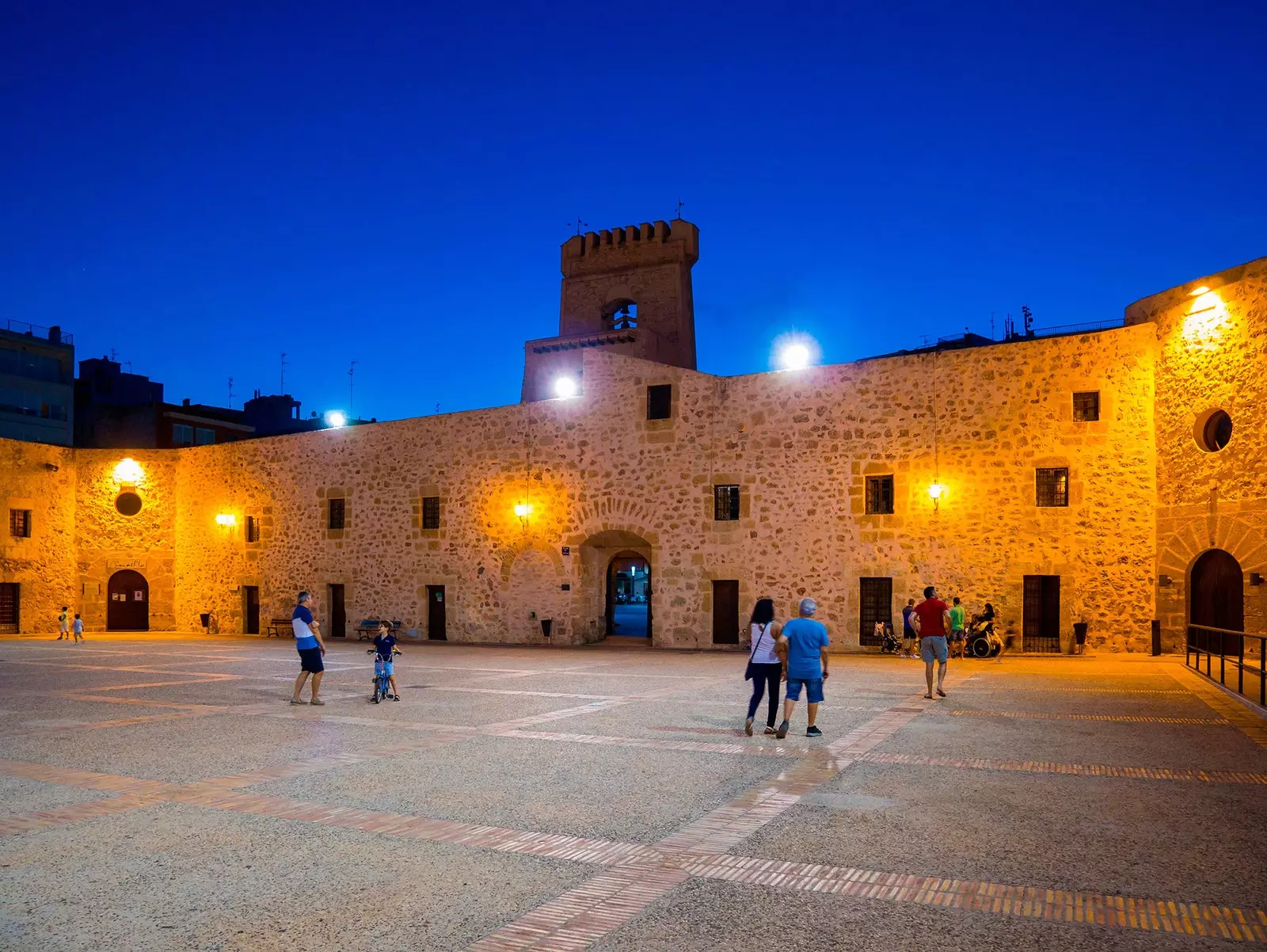
In its historic center there is not only a castle, but also hermitages, museums and even a palm grove
3. SALT FLATS MORE PHOTOGENIC THAN MARS
After leaving kitsch behind Pola Park Theme Park, a reflection of nostalgic Santa Pola today conquered by hundreds of apartments, the road seems to melt, but it is not because of the heat. Pink and blue colored waters surround the threshold of the famous Parque de las Salinas de Santa Pola, a set of 2,470 hectares of marshes born from the extraction of salt today led by two private companies between white mountains.
With a crop that reaches its maximum height in the month of August (and therefore, a greater coloration of the water), the salt flats of Santa Pola draw a scene that we could well compare with a first glimpse of Mars.
Every adventure begins at the Salt Museum and Interpretation Center of the Salinas Natural Park. From here, two routes are born: the Bon Matí route and the Tamarit route, whose culmination supposes the Tamarit tower, construction erected in 1552 and that, especially at sunset, reappears in a palette of a thousand colors.
4,13,000 FLAMINGOES, AMONG OTHER FASCINATING EXAMPLES OF AVIFAUNA
When we think of flamingos, we imagine them slender on one of their legs; but seldom flying. In the Salinas de Santa Pola, the silence is only interrupted by a pink flight, the cawing of birds and the gentle swaying of the reeds that flank this oasis. At a time when the health crisis has been a sigh for the birds in the area, up to 13,000 flamingos (instead of the usual 8,000) share habitat with the great grebe, the great cormorant, the herons or the friendly plovers, among many other species.
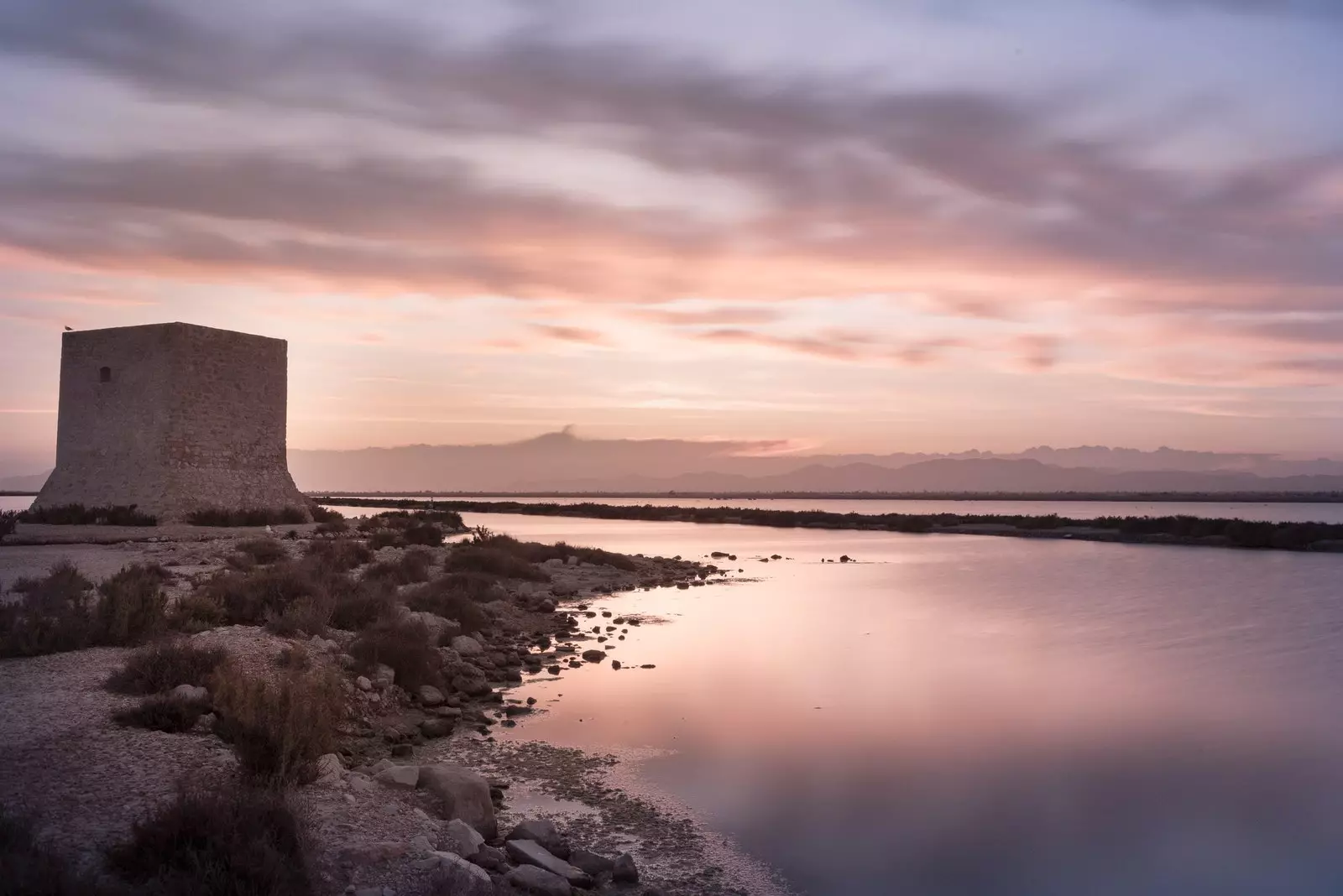
Its salt flats are more photogenic than Mars. Or not?
5. ITS FISH AUCTION, ONE OF THE FEW PUBLIC CHARACTER ON THE MEDITERRANEAN COAST OF SPAIN
The auctions are not just about Banksy paintings or old Hollywood star dresses. The fish, so coveted in this corner of the world by merchants and establishments, unfolds a spectacle as costumbrista as it is unmissable as it is the auction of the Fishermen's Guild that is held every day around 4:00 p.m. on the Santa Pola pier. An event that, unfortunately, these weeks is suspended due to covid-19 but that, equally, leaves behind an equally enjoyable marine environment.
After eating, there is nothing better than approaching the stall and seeing that the peixateria stands wait expectantly, the seagulls seem to swell more than ever and the boats begin to arrive. The aroma of the sea and its thousand nuances, fishermen with masks loaded with tasty shrimps and amulets stamped on old wooden boats make up this costumbrista landscape that you can enjoy from anywhere in the port.
As icing, nothing better than letting yourself fall for stalls adjacent to the Guild building (open from 6:00 p.m. to 9:30 p.m.) and let yourself be intoxicated by the contrasts of salted fish, roe, prawns and other delicacies.
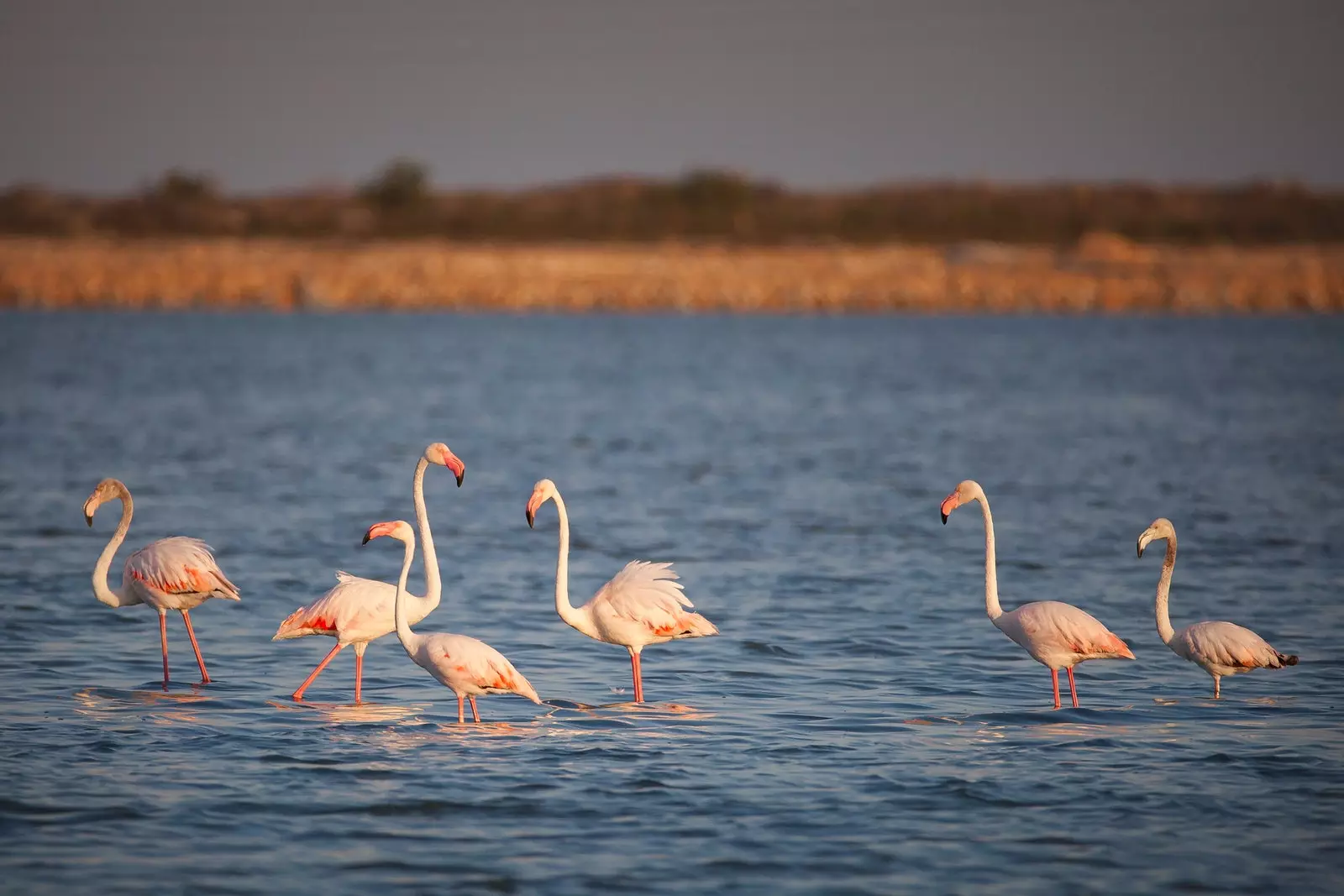
Some 13,000 flamingos gather in its salt pans this year
6. AN EXCELLENT SEAFOOD GASTRONOMY, BEYOND YOUR DESIRED SHRIMP
To Santa Pola, always, the sea gives it all. In addition to the extraction of salt, which is the main economic activity in the area, this fishing village lives off its 'Peix de Santa Pola'. Every day, they ceremoniously disembark at the port tons of red mullet, whiting, red and white prawns, Norway lobster, octopus, squid, sardines, anchovies, southern tuna, mackerel, monkfish and, of course, their famous shrimp.
Just as Denia treasures her red prawn, for which everyone sighs, here it is Santa Pola who gives the surname to this crustacean, which is normally eaten boiled, without further ado.
After witnessing this ritual in which, between extensive networks piled up, the boats arrive loaded with the goods that the fishermen meticulously fit into boxes with ice, there are several addresses where you can taste all these Mediterranean delicacies that are daily brought ashore by day laborers from the sea: go to rich house , to the La Cofradía restaurant or to the antediluvian Los Curros. In any of them, in addition to trying fresh fish and shellfish or their salted versions, such as mojama, viso, bonito or mullet, ling or tuna roe, You can previously order the typical chicken pot or rice: a banda, black with monkfish, squid and prawns or arrós i gatet (called mussola in Valencian and cazón in Spanish).
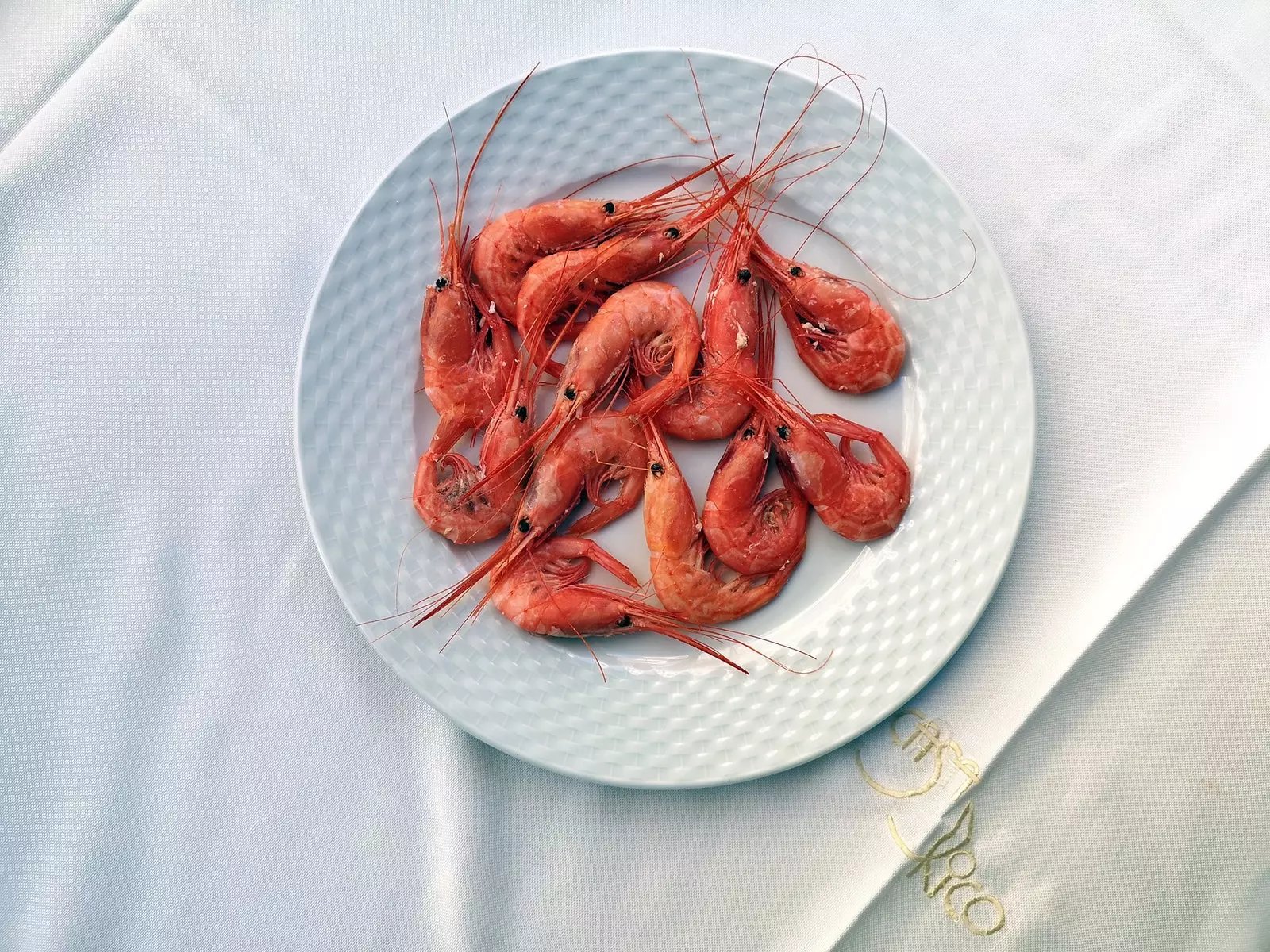
Shrimp from Santa Pola, at Casa Rico
If you prefer something more modern, book at Varadero : in the elaboration of your letter you have participated Martin Berasategui and that is why you will find some of his classics like Hake with crab bed or Biscayan cod. Here you can also order other traditional dishes from the area such as rice with a crust (with sausage and free-range chicken), grouper gazpacho or rice with lobster (dry, sweet or soupy).
In the afternoon, it is obligatory an horchata in Luis Baldo (if you dare, crown it with a scoop of nougat ice cream) or a Black and White, granita coffee with its traditional shortbread ice cream. And sweet cravings are the territory of Choco&Latte by Dalúa : haute pastry from Elche (also catering) created by pastry chef Daniel Álvarez. Even if you don't have a sweet tooth its mille-feuille are a necessary temptation. And if wherever you go you like to taste the typical sweets, ask in the village bakeries for the wine rolls, the mollitas cakes or the bonfires, moñas or toñas.
7. ITS 11 KILOMETERS OF HETEROGENEOUS BEACHES
Of its 15 kilometers of coastline, 11 are beaches, all facing south: Playa Lisa is the one chosen by wind addicts, like lovers of windsurfing and other sailing sports; Gran Playa or Levante are the most accessible and therefore preferred by families, picking up the baton from the people of Elche who, years ago, spent the summer on these two urban beaches, where there were reed and esparto grass barracks.
A little further from the town, and on the other side of the port, are the coves of Santiago Bernabéu, in honor of the former president of Real Madrid, who had a house in Santa Pola; Varadero beach, from where the traditional swim to Tabarca departs each year and the coves of Santa Pola del Este, often dotted with dozens of caravans, because they are the furthest from the hustle and bustle and perfect for snorkeling, although there booties are essential, since they are characterized by their rocky bottom. If you are traveling with your dog, go to the Caleta dels Gossets, the canine beach of the municipality.
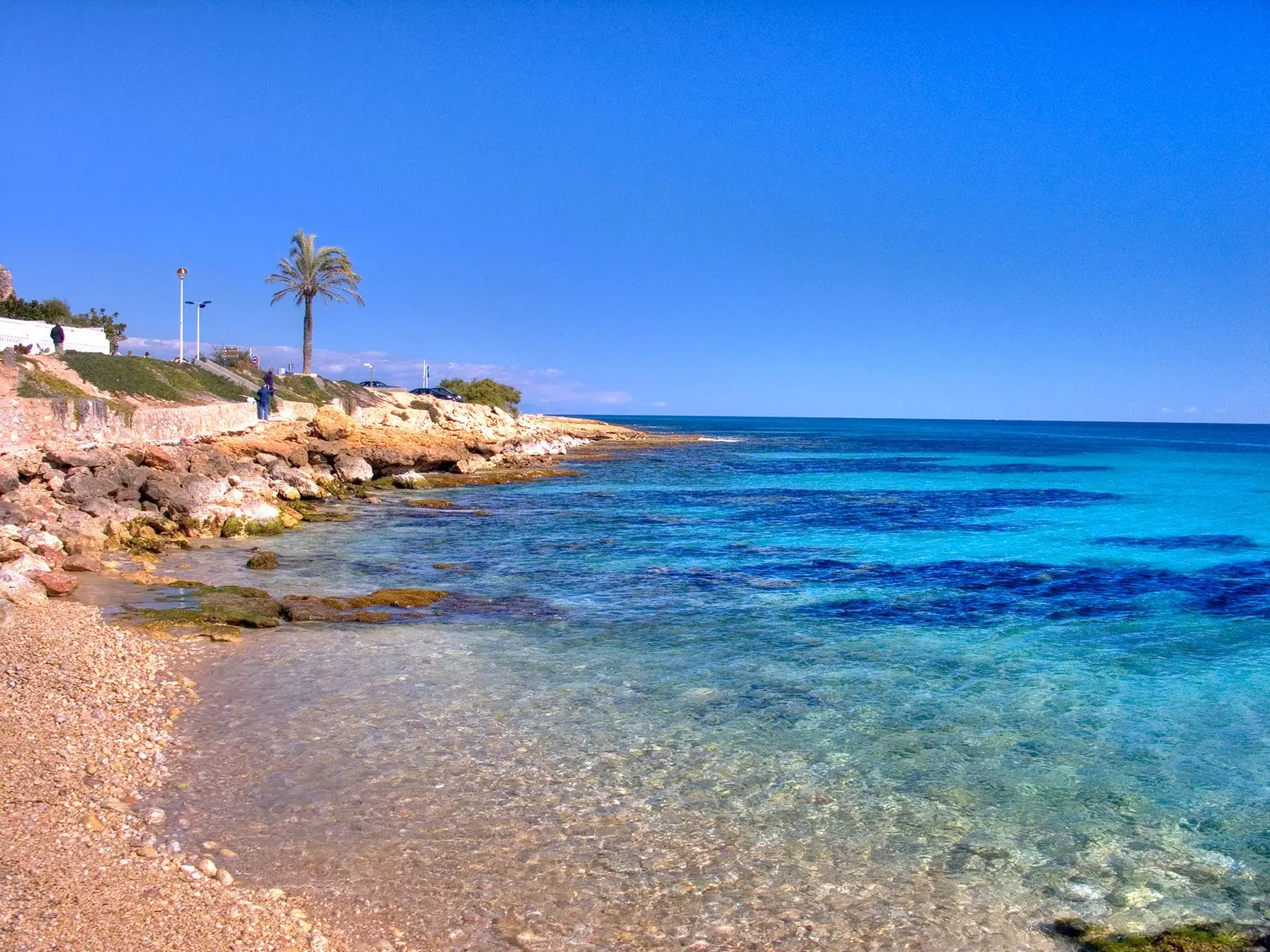
Eastern Coves
8. ITS SUNSETS AT THE LIGHTHOUSE... OR FROM THE AIR
The day in Santa Pola ends by coasting at the lighthouse, at the eastern end of the cape and where the Atalayola Watchtower was located. There, every afternoon, hundreds of people gather at the top to take pictures at the winding viewpoint and to be hypnotized by the magnetic sunset, while some paragliders fly overhead.
“It is one of the few places in all of Spain where we fly all year round”. They only stop in December and January: a winter parenthesis in which everything pauses here. Raúl Castillejo, from Parapente Santa Pola, an active tourism company and pilot school with 15 years of experience in the area, tells us that the activity lasts about 20-25 minutes in the air, always with an instructor. When the wind is not enough (“the slope is very capricious, you can only fly with an easterly wind”), they do it from Palomaret, in Agost, another Alicante municipality.
With the last rays of the sun, the golden hour is fading away, while the gaze goes, as always happens here, towards the Mediterranean. In the distance, we can see Tabarca: the only populated island in the Valencian Community, as unexpected as it is small. But that is another story. For tomorrow, maybe.
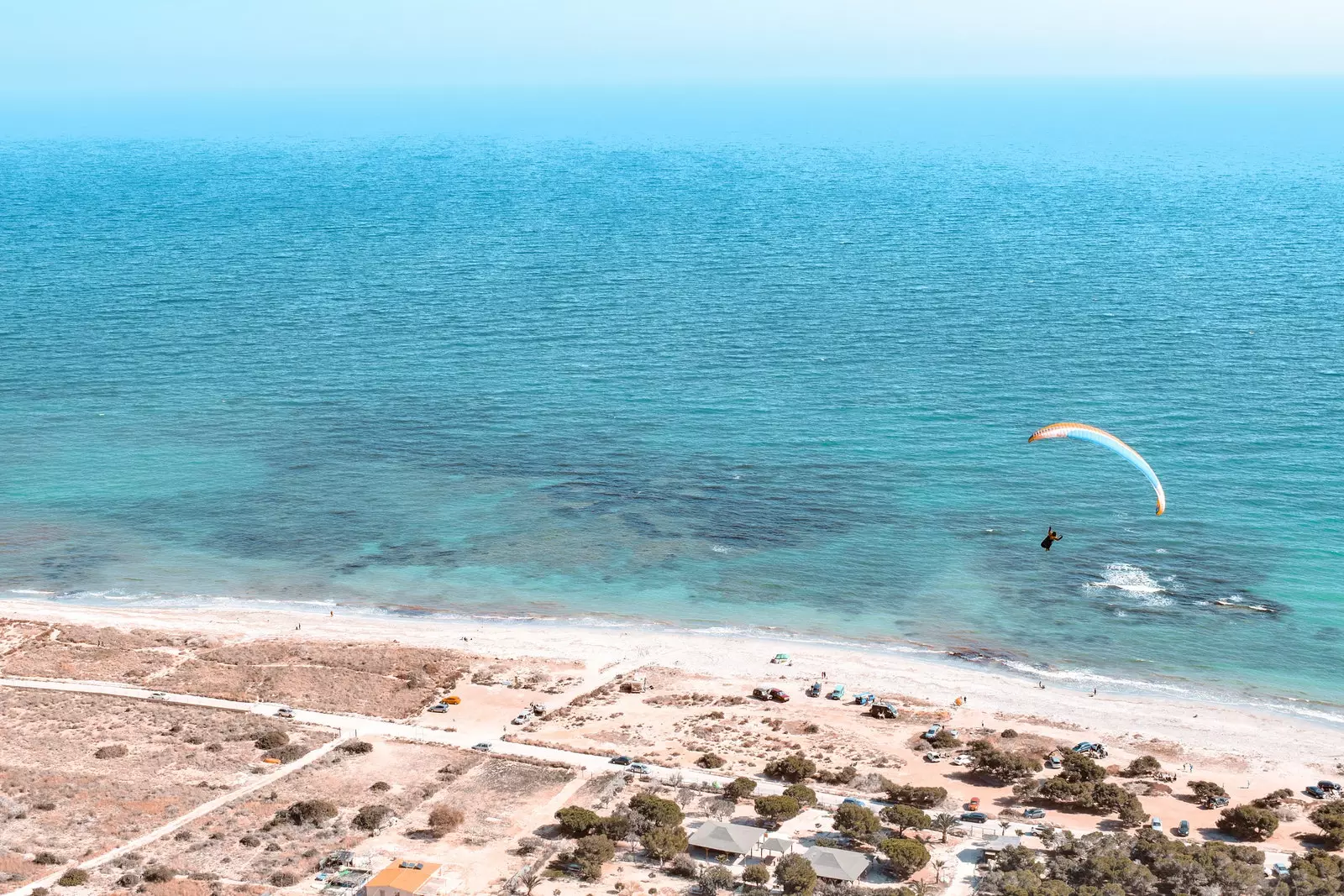
Its sunsets from the lighthouse or in the air
